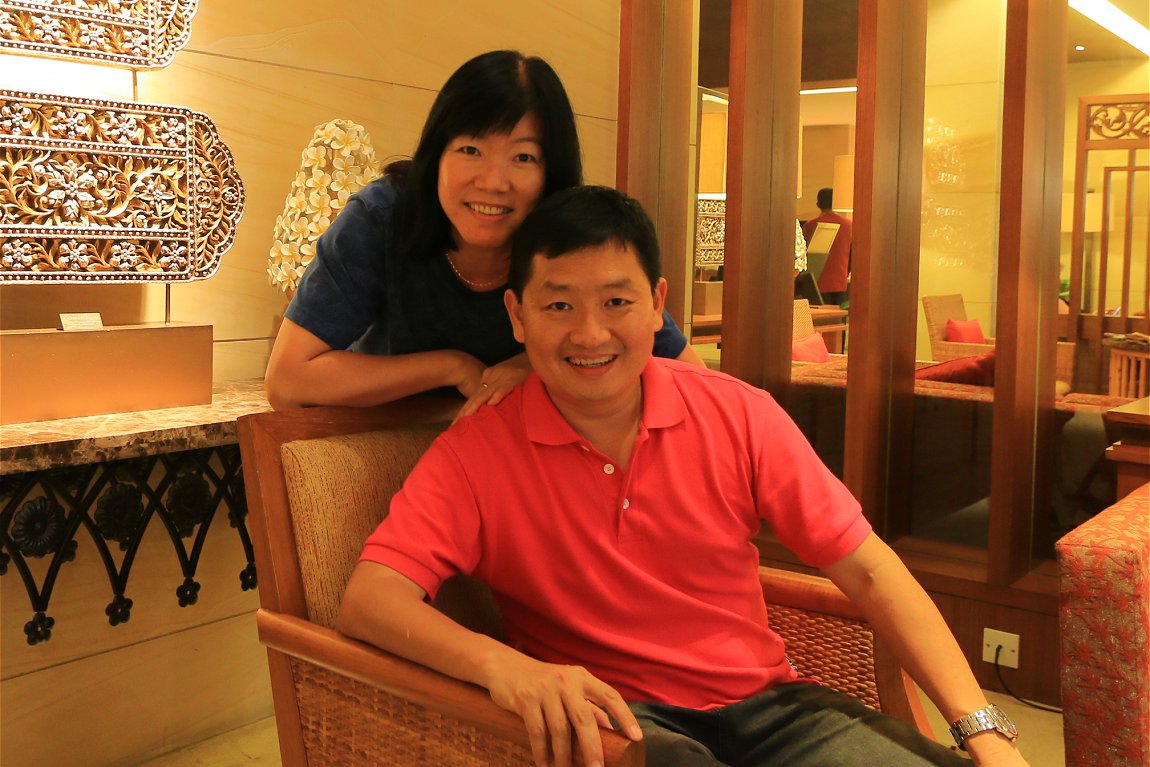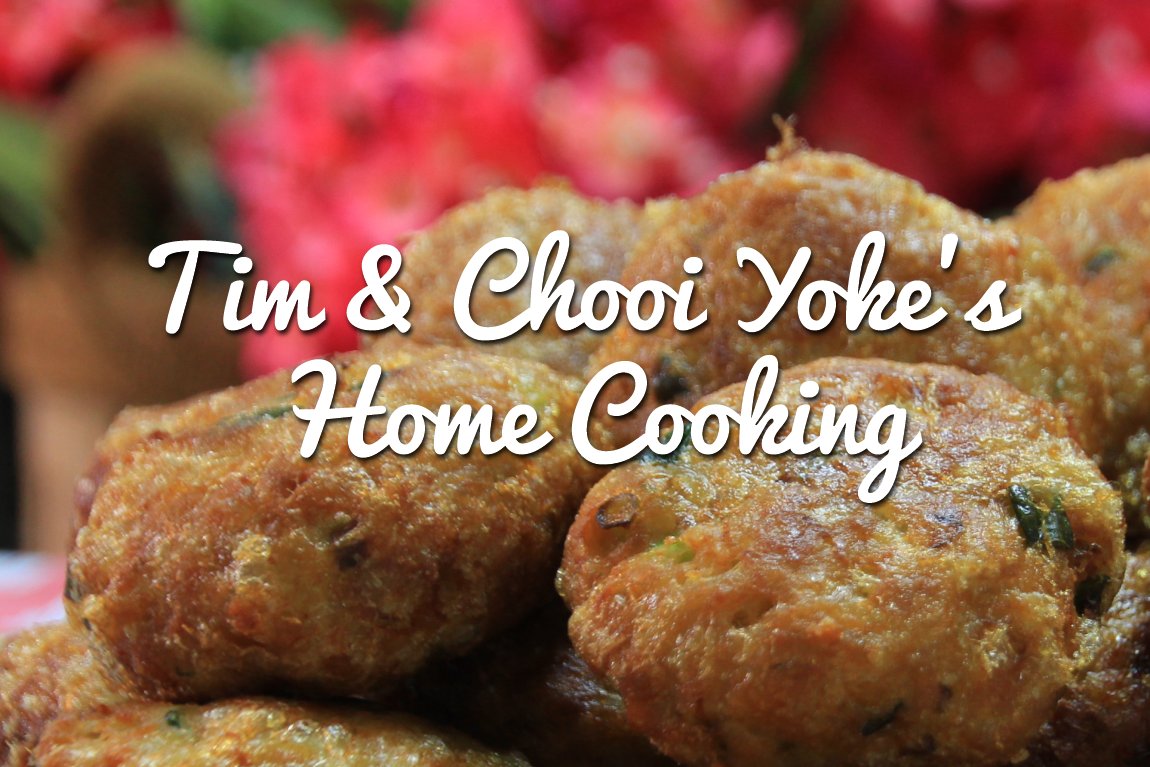
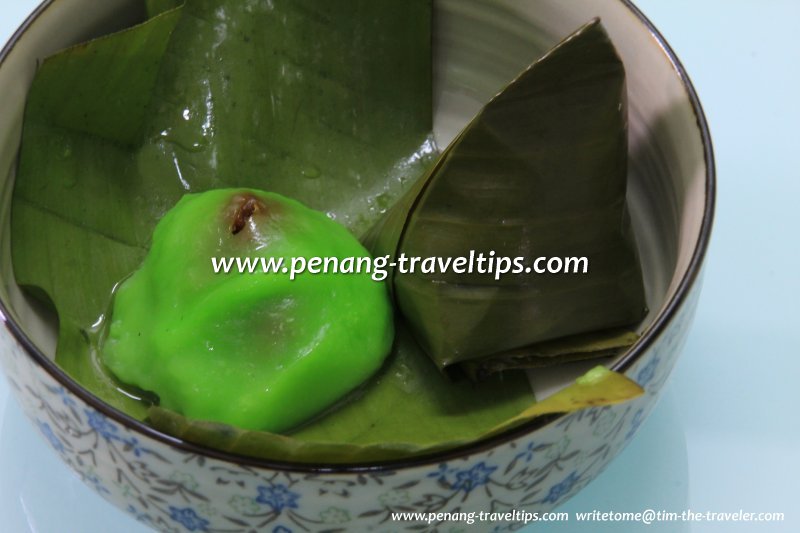 Kuih Koci, from Jelutong Market (14 February 2013)
Kuih Koci, from Jelutong Market (14 February 2013)
Kuih Koci are glutinous rice dough stuffed with grated coconut. They are wrapped in banana leaf to form pointed cones. What makes Kuih Koci delicious is the grated coconut sweetened with palm sugar. It is a popular snack among the Baba Nyonya of Penang, and is still widely available at stalls selling Nyonya kuih in most major markets in Penang, particularly in the morning.
You can also make Kuih Koci yourself, following the recipe below.
Kuih Koci Recipe
Utensils
- Steamer
- Banana leaf
- Pot
- Wok/second pot
- Mixing bowl
- Cooking oil for greasing
Dough
- 150g glutinous rice flour
- 50g tapioca flour
- 200ml thin coconut milk (santan)
- pinch of salt (app. 1/4-1/3 teaspoon)
- 3 pandan leaves, knotted
- 200g palm sugar (gula melaka)
- 60ml water
- 250g grated coconut
- pinch of salt (app. 1/8 teaspoon)
Steps
- Scald the banana leaves to soften them. The fastest way to do it is to hold it over an open flame. You will see the leaf change from dull to shiny. The alternative method is to scald it in hot water. Cut into round shape, 20 cm in diameter. Grease the surface with oil.
- In a pot, add in palm sugar, water and pandan leaves. Bring to a boil and sieve the mixture. Pour it back to the pot.
- Add in grated coconut and salt and cook until mixture is moist and 'shining'. This takes about 10 minutes. Dish out to cool and shaped into lime-sized balls.
- In a mixing bowl, sieve glutinous rice flour and tapioca flour. Add in salt and mix well.
- In a small pot, heat up the coconut milk but do not boil it. Once the coconut milk is heated up, pour the mixture into the flour. Knead until a soft dough is formed. Leave aside.
- To assemble the kuih koci: Take some dough and roll it into round ball. Flattened the ball and place a piece of filling in the center. Then reshape the dough to cover up the filling. The thickness of the dough should be inconsistent, with some parts almost showing the filling within.
- Arrange the dough into the steamer tray and steam for about 10 minutes, then allow to cool.*
- Grease the inside of banana leaf and form a cone with it. Put the cooled dough ball into the cone, then fold in the sides of the banana leaf to enclose it. Then return the Kuih Koci to the steamer and steam for 5 minutes.
皮料:
- 150 克 糯米粉
- 50 克 薯粉
- 200 毫升 揶浆
- 1/4-1/3 茶匙 盐
- 班兰叶 3片 - 打结
- 200 克 椰糖/ 黄糖
- 60 毫升 水
- 250 克 白椰丝
- 1/8 茶匙 盐
- 香蕉叶15 片 - 烫软,剪成直径20 公分圆形,涂油。
- 把椰糖,水和班兰叶放入锅内,煮至糖溶解,过沥后捯回锅中。
- 加入椰丝和盐,继续煮至材料发亮,大约10分钟。
- 待冷后搓成酸柑般的圆球,待用。
- 把糯米粉,薯粉及盐混合。
- 在另一个锅内把揶浆煮热但别煮滚,然后捯入粉料中,搓成光滑粉团, 待用。
- 取少许粉团搓成小丸, 压扁, 包入一粒椰丝馅, 然后包起搓圆。
- 把香蕉叶做成沥斗状, 放入包馅的粉团, 对折封口成三角状,
- 放在蒸盘上。 大火蒸10 分钟。 待冷享用。
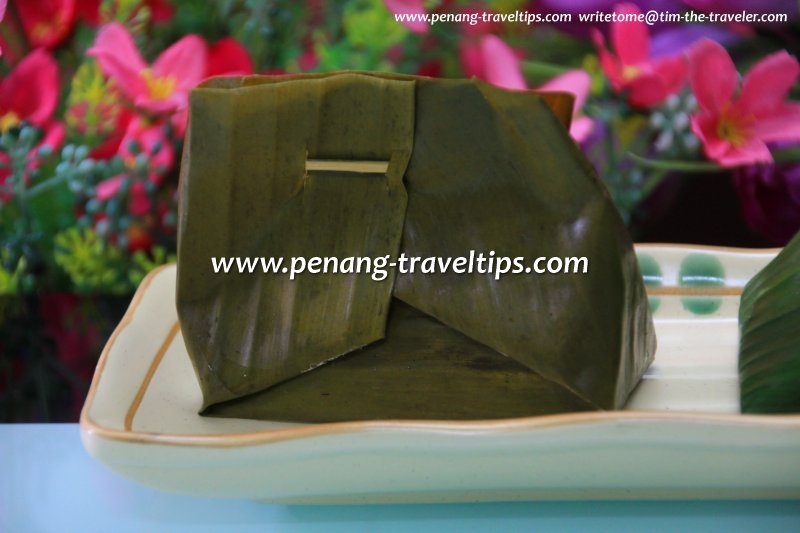 Kuih Koci Santan, from the Jelutong Market (14 February 2013)
Kuih Koci Santan, from the Jelutong Market (14 February 2013)
My wife tried making Kuih Koci for the first time yesterday. She discovered that the most challenging step was to wrap the banana leaf over the dough balls. She straight away steam the balls in the banana leaf, as a result, the banana leaves came out over-steamed. Other than that, the Kuih Koci she made was very tasty. She brought her Kuih Koci to her mother, who then told her the tip to steam the dough ball separately before wrapping.
Here's the Kuih Koci that my wife made yesterday.
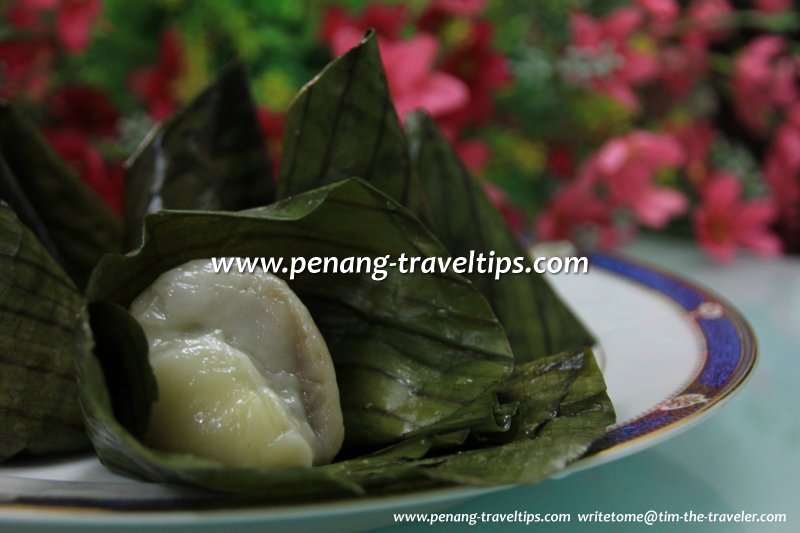 My wife's Kuih Koci (17 February 2013)
My wife's Kuih Koci (17 February 2013)
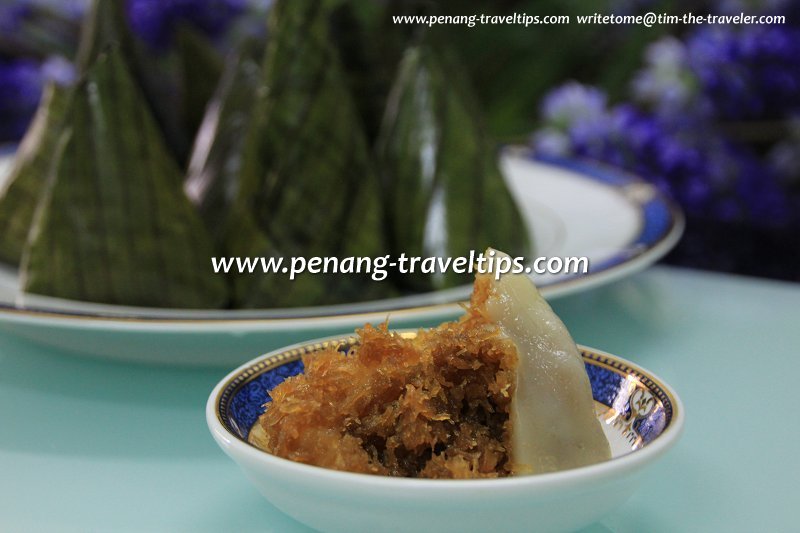 My wife's Kuih Koci with its filling (17 February 2013)
My wife's Kuih Koci with its filling (17 February 2013)
List of Penang Nyonya Kuih
Tim & Chooi Yoke's Recipes of Homecooked Food
Let us share our recipes of homecooked food with you.Details
About this website

Dear visitor, thank you so much for reading this page. My name is Timothy Tye and my hobby is to find out about places, write about them and share the information with you on this website. I have been writing this site since 5 January 2003. Originally (from 2003 until 2009, the site was called AsiaExplorers. I changed the name to Penang Travel Tips in 2009, even though I describe more than just Penang but everywhere I go (I often need to tell people that "Penang Travel Tips" is not just information about Penang, but information written in Penang), especially places in Malaysia and Singapore, and in all the years since 2003, I have described over 20,000 places.
While I try my best to provide you information as accurate as I can get it to be, I do apologize for any errors and for outdated information which I am unaware. Nevertheless, I hope that what I have described here will be useful to you.
To get to know me better, do follow me on Facebook!
Copyright © 2003-2025 Timothy Tye. All Rights Reserved.

 Go Back
Go Back